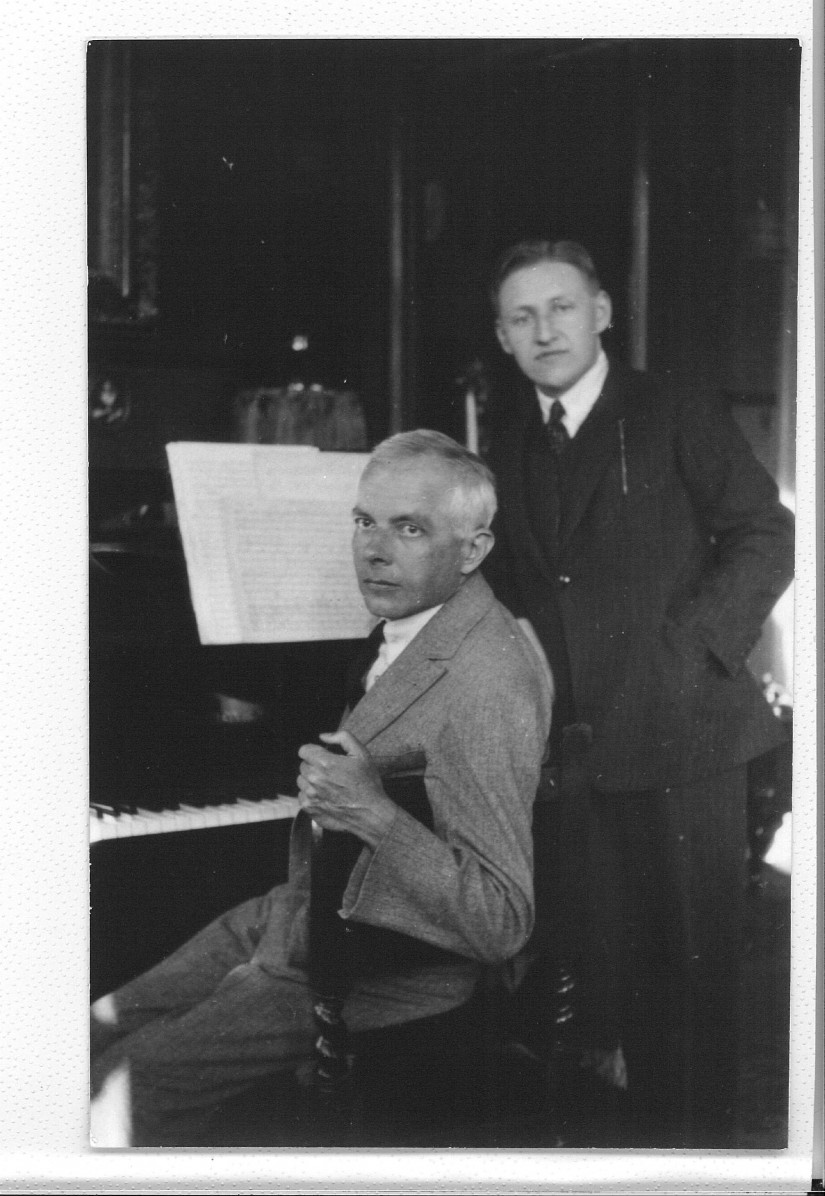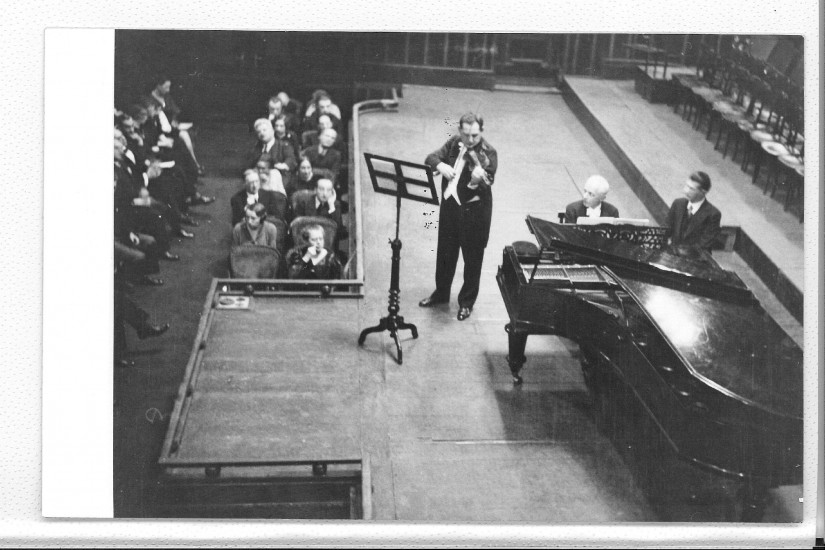Bartók, the pianist
Some musical characteristics of his compositions, especially in his works for piano, are inseparable from his pianist personality. They are also defined by the fact that he always intended his works, even those containing his most abstract ideas, for actual performance.
As a pianist, he was comfortable with all the different roles of a pianist, soloist, chamber musician, singer’s accompanist or soloist with orchestra. His repertory included music from early 17th century Baroque to most recent contemporary music. He did not play always everything or anything, though. On the contrary, he carefully considered what to perform publicly in different venues and in different periods of his career.
In the early years he mainly performed the nationally tinged repertory of a virtuoso pianist composer. Works by the romantic composers (Schumann, Chopin or Liszt) were combined with fresh contemporary music by Ernő (Ernst von) Dohnányi, Richard Strauss and Max Reger along with a selection of his own compositions. While Bartók’s importance as a composer and ethnomusicologist now obviously prevails, in 1907 he was invited to teach piano in his alma mater, the National Hungarian Royal Academy of Music in Budapest where he taught until 1934, when, on his own initiative, he was transferred to the Hungarian Academy of Sciences to prepare the complete Hungarian folk song collection for publication. His main occupation was thus as piano professor throughout most of his professional life and his concert activity became secondary and supplementary. His decisive scholarly and compositional turn towards folk music was paralleled by his growing interest in early music history. When in 1911 the short-lived New Hungarian Music Society (UMZE) was founded to reform Budapest’s musical life, at the first concerts arranged under its aegis Bartók performed early music from Scarlatti, Couperin, and Rameau, as well as contemporary music by Leó Weiner, Debussy and Ravel. What he then selected for his interest from Baroque music, found its way to pedagogical editions (published with the Hungarian Rozsnyai firm) in the early 1920s. His rhythmically plastic and transparent performance of a few piece by Scarlatti can also be studied in recording. (These special test recordings were preserved and first issued by Péter Bartók.) In the later 1920s, his original concert arrangements of organ and harpsichord pieces by less well-known Italian Baroque composers (such as Azzolino Bernardino della Ciaia or Domenico Zippoli), partially published by Carl Fischer in New York, also became a characteristic part of his repertory.

Although, apart from selected pieces by Kodály, his own compositions increasingly formed the backbone of the programme in his solo recitals, Mozart’s sonatas and the Fantasia in C minor also gained ever more importance from the 1920s on. Bartók had worked on a performing edition of all Mozart sonatas (still in pedagogical use today) along with his edition of Bach’s The Well-Tempered Clavier, a selection from the Notenbüchlein für Anna Magdalena Bach, a series of Haydn sonatas and all in all 27 sonatas by Beethoven in his early years at the Academy of Music as piano professor.
Violin sonatas of Bach, Mozart and Beethoven or violin works by Szymanowski featured at concerts with great violinists, such as Jelly Arányi, Zoltán Székely, Joseph Szigeti or Ede Zathureczky, with whom he also played his own works, the two violin sonatas (1921 and 1922, resp.) and later the two violin rhapsodies (1928). Although after his 1903 first representative Vienna debut with Beethoven’s E-flat major Piano Concerto he mainly only performed his own compositions involving orchestra, Rhapsody Op. 1 then the Piano Concertos No. 1 and 2 (from 1927 and 1933, resp.), he did appear as soloist in Bach and Mozart concertos occasionally in the later 1930s. His contribution to a performance of Bach’s two concertos for three pianos with Dohnányi and Edwin Fischer can be considered an especially memorable event. Thanks to Sophie Babits Török, a fragmentary recording of Liszt’s Concerto pathétique has also been preserved in which the markedly different style of Bartók and Dohnányi can be compared.

More than nine hours of recordings with Bartók at the piano have been preserved. Whereas the recordings made between 1910 and 1945 are vastly different in character and quality – they include home-made private recording with phonograph, fragmentary recordings of radio concerts, piano rolls and professional studio recordings for record companies – this does not limit their artistic significance. For example, what a revelation it might be for the musician to listen to the short and crackling fragments of a performance of the Second Piano Concerto. Apart from his (occasionally repeated) recordings of his own works – let us mention at least “Evening in Transylvania,” “Bear Dance,” Allegro barbaro, “A Bit Tipsy,”, Romanian Folk Dances, Sonatina, Petite suite, pieces from Mikrokosmos and a selection from For Children – some of the most unforgettable recordings are with other musician partners: songs from Kodály’s Hungarian Music series with singer Mária Basilides or the Kreutzer Sonata and Debussy’s Violin Sonata with Szigeti in a 1940 concert at the Library of Congress in Washington. Even if the complete radio performance of the Sonata for Two Pianos and Percussion should be listened to as if it were a recorded rehearsal rather than a concert because of the ill preparation of the percussionists, commercially sold record of Contrasts with Benny Goodman’s clarinet solo has not lost any of its freshness in the past decades. What can be listened to from Bartók’s performance of Bach, Mozart, Beethoven, Liszt or Chopin, is also invaluable. The significance of all these recordings, his special rubato performance, his tempos and, in general, the relationship between the notation and the sounding musical work taking shape under his fingers, were most deeply analysed by László Somfai, who, together with Zoltán Kocsis and János Sebestyén issued the complete collection of Bartók recordings accompanied by detailed commentary.
“His piano performance was devoid of any superficial, irrelevant flourish; every tone was pure essence,” according to pianist Lajos Hernádi. Another pianist, Géza Frid emphasized: “He was a revolutionary in composition; his piano performance was also under the aegis of renewal, devoid of all routine.” And finally, the immediacy of experience can be felt in the words of music critic Aladár Tóth writing about a 1928 concert: “There is a kind of virginal purity even in his most infernal hammering. …This is more than the genius of the interpreting artist; it is the inherent genius of the creative artist for everything that is creation.” Bartók’s recordings, even the fragmentary ones, preserve this spontaneous and highly concentrated quality; they also preserve the playfulness, sense of humour and gentleness of the composer at the piano.
László Vikárius,
Head of the Budapest Bartók Archives


